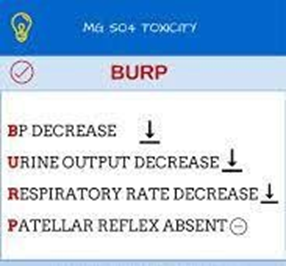A woman's obstetric history indicates that she is pregnant for the fourth time and all of her children from previous pregnancies are living. One was born at 39 weeks of gestation, another child was born at 40 weeks of gestation, and the last child was born at 36.2 weeks of gestation. What is her gravidity and parity using the GTPAL system?
Select one:
4-2-1-0-3
4-1-1-1-3
4-1-2-0-3
4-3-0-0-3
The Correct Answer is A
a. In this case, the woman is pregnant for the fourth time, so her gravidity is 4.
She has one child born at 39 weeks, another child born at 40 weeks, and one child born at 36.2 weeks. The first two are considered term births, and the last one is considered a preterm birth. Therefore, her term is 1 and her preterm is 2. She has no abortions, so her abortion is 0. She has three living children, so her living children is 3. Hence, her GTPAL is 4-2-1-0-3.
b. This indicates 1 full-term pregnancy, 1 preterm pregnancy, and 3 living child.
c. This would indicate 1 full-term pregnancy, 2 preterm pregnancies, and 3 living children.
d. 4-3-0-0-3: This would indicate 3 full-term pregnancies and 3 living children.
Nursing Test Bank
Naxlex Comprehensive Predictor Exams
Related Questions
Correct Answer is D
Explanation
a. A scalp electrode is not indicated unless there is a problem with the external monitor tracing or if further assessment of the fetal heart rate variability is needed.
b. This is important but repositioning the patient is the priority.
c. Amnioinfusion is only done if repositioning the patient does not resolve the late decelerations.
d. The nurse is observing late decelerations of the fetal heart rate, which indicate uteroplacental insufficiency and fetal hypoxia. The nurse's first priority is to reposition the patient to improve placental blood flow and oxygen delivery to the fetus. Repositioning can be done by turning the patient to her side, elevating her legs, or placing a wedge under her hip.
Correct Answer is B
Explanation
a. This is an important nursing intervention when a patient is receiving magnesium sulfate, as the medication can affect renal function.
b. Assessing cervix dilation is not related to magnesium sulfate toxicity.
c. This is an important nursing intervention when a patient is receiving magnesium sulfate, as the medication can affect neuromuscular function.
d. This is an important nursing intervention when a patient is receiving magnesium sulfate, as the medication can affect respiratory function.

Whether you are a student looking to ace your exams or a practicing nurse seeking to enhance your expertise , our nursing education contents will empower you with the confidence and competence to make a difference in the lives of patients and become a respected leader in the healthcare field.
Visit Naxlex, invest in your future and unlock endless possibilities with our unparalleled nursing education contents today
Report Wrong Answer on the Current Question
Do you disagree with the answer? If yes, what is your expected answer? Explain.
Kindly be descriptive with the issue you are facing.
